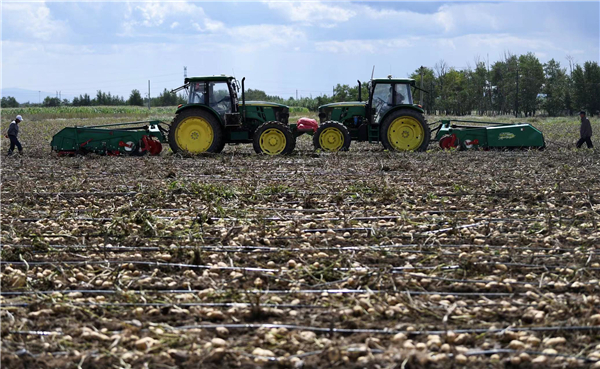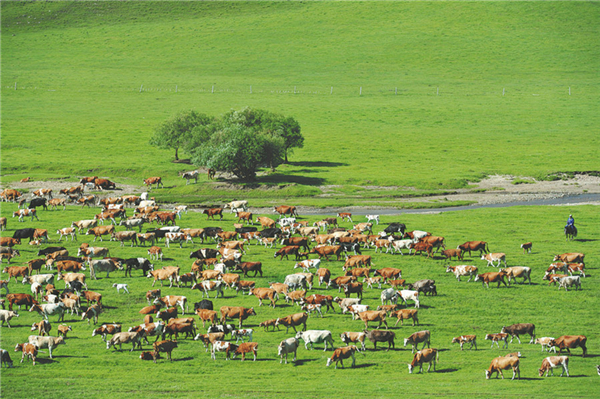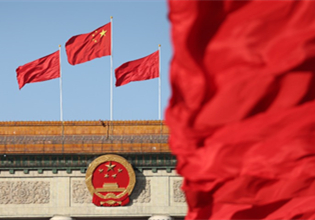Inner Mongolia's agriculture, animal husbandry industries shine

Tractors harvest potatoes outside the city of Ulaanqab in North China's Inner Mongolia autonomous region. [Photo/Inner Mongolia Daily]
The agriculture and animal husbandry industries have reportedly performed exceptionally well and have now become key economic drivers in North China's Inner Mongolia autonomous region.
The region's grain output in 2021 hit 38.41 billion kilograms, an increase of 1.76 billion kilograms on the previous year.
The performance set a record and capped off 18 consecutive years of bumper harvests, according to the latest data from the National Bureau of Statistics.
Meanwhile, Inner Mongolia achieved a meat output of 2.7 million metric tons and a milk output of 6.73 million tons last year. The region's output of beef, mutton, milk and cashmere ranked first in the country.
The efforts made by Inner Mongolia to stabilize the area given over to grain production, improve grain planting technology and livestock breeding technology are said to have contributed to the region's bumper harvest.
In recent years, Inner Mongolia has constructed 11 national-level livestock and poultry core breeding farms, five bull breeding centers and 1 million mu (66,667 hectares) of national-level, fine-breeding bases.
Currently, Inner Mongolia's dairy cow frozen sperm essence and sunflower seed industry ranked first in the country in terms of market share. The region's soybean seed production area and corn seed production area ranked third and fifth in the country, respectively.
Moreover, it has cultivated 26 Chinese Simmental cattle and more than 200,000 high-quality rams, both ranking among the top in China.

Wheat is harvested in the region administered by the city of Bayannuur in Inner Mongolia. [Photo/Inner Mongolia Daily]
In addition, more than 40 scientific and technological teams have been established in Inner Mongolia to go deep into the various production lines. As a result, more than 350 green and efficient technologies, such as shallow burial drip irrigation of corn and compound planting of soybean and corn strips have been promoted.
During the same period, the use of chemical fertilizers and pesticides in Inner Mongolia has continued to fall, and the comprehensive use of plastic film and straw has steadily improved. The utilization of livestock and poultry manure resources has achieved full coverage in important ecological protection areas and in large livestock breeding counties, with a utilization rate of 88.2 percent.
In addition, Inner Mongolia has promoted conservation tillage technology in 34 banners and counties in the region's eastern part and the implementation area is continuing to expand.
To date, a total of 45.89 million mu of high-standard farmland has been established.

The use of the Ar Horqin Grassland Nomadic System in the Inner Mongolia autonomous region demonstrates the wisdom of herdsmen who work in harmony with nature. [Photo provided to China Daily]



 Print
Print Mail
Mail





